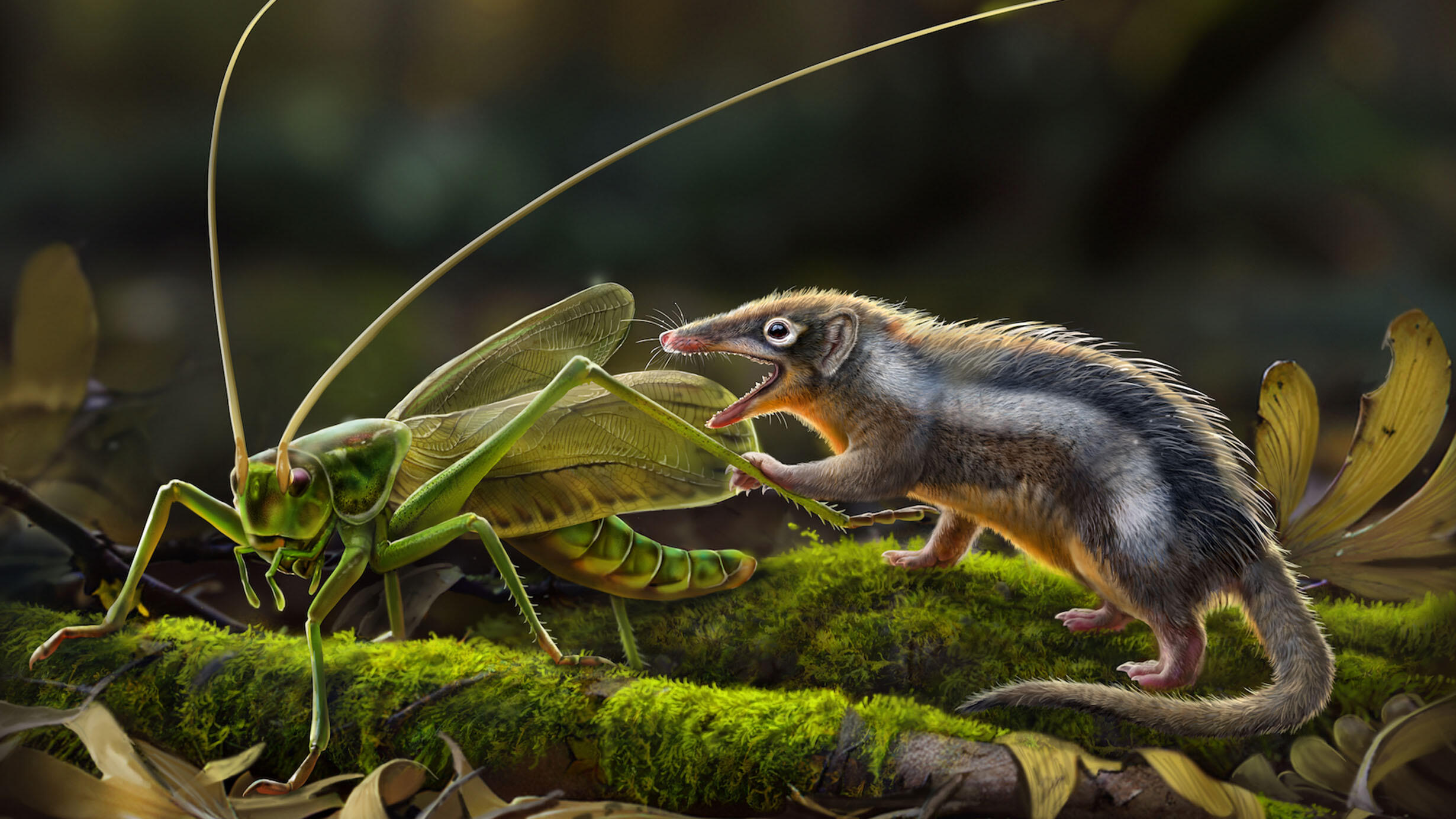 An artist’s illustration of Feredocodon chowi.
An artist’s illustration of Feredocodon chowi.© Chuang Zhao
New insights into mammalian tooth, jaw, and ear evolution, gleaned from analyzing fossils of two Jurassic-era mammal species from China, are reshaping how scientists think about early mammals.
Two studies in this week’s journal Nature, both led by scientists at the Museum and the Chinese Academy of Sciences, focus on two new species of fossil mammals that offer new evidence about early mammalian evolution.
The first study focuses on two newly discovered fossils of mouse-sized mammals called shuotheriids, which lived between 168–164 million years ago in what is today Inner Mongolia and had molars that are unlike those of any other living mammal. Shuotheriids were previously linked to the group that includes today’s monotremes—mammals that lay eggs, such as the platypus.
“Since the 1980s, the perplexing tooth shape seen in shuotheriids has been a barrier to our efforts to understand early mammal evolution,” said Jin Meng, a curator in the Museum’s Division of Paleontology and a corresponding author on both Nature papers along with Fangyuan Mao from the Chinese Academy of Sciences. “These new specimens have allowed us to solve this longstanding problem.”
The new research suggests that shuotheriid molars more closely resembled those of another extinct mammal group, the docodontans. The new species is named Feredocodon chowi.
© Chuang Zhao
Feredocodon chowi, along with a second new species, named Dianoconodon youngi, is also the focus of a second study, in which researchers found fossil evidence of the transition from the reptilian to the modern mammalian middle ear.
The modern mammalian middle ear, which gives modern mammals the sharpest hearing on Earth, has three bones. This feature that is unique to mammals; reptiles and birds only have one middle-ear bone. From prior studies and fossil evidence, scientists know that during the early evolution of mammals from the reptilian group that includes lizards, crocodilians, and dinosaurs, bones that formed the joints of the jaw were separated and became associated with hearing.
The transition started from an ancestral animal that had a double jaw joint, a feature with the joint of a mammal on the outside and a reptilian joint on the inside. Analyses of the older fossil, Dianoconodon youngi, which dates back to between 201–184 million years ago, show that one of its two joints, the reptilian one, was starting to lose its ability to handle the forces created by chewing. The more recent specimen, Feredocodon chowi, already had a mammal middle ear, formed and adapted exclusively for hearing.
“Scientists have been trying to understand how the mammalian middle ear evolved since Darwin’s time,” said Meng. “These new fossils bring to light a critical missing link and enrich our understanding of the gradual evolution of the mammalian middle ear.”